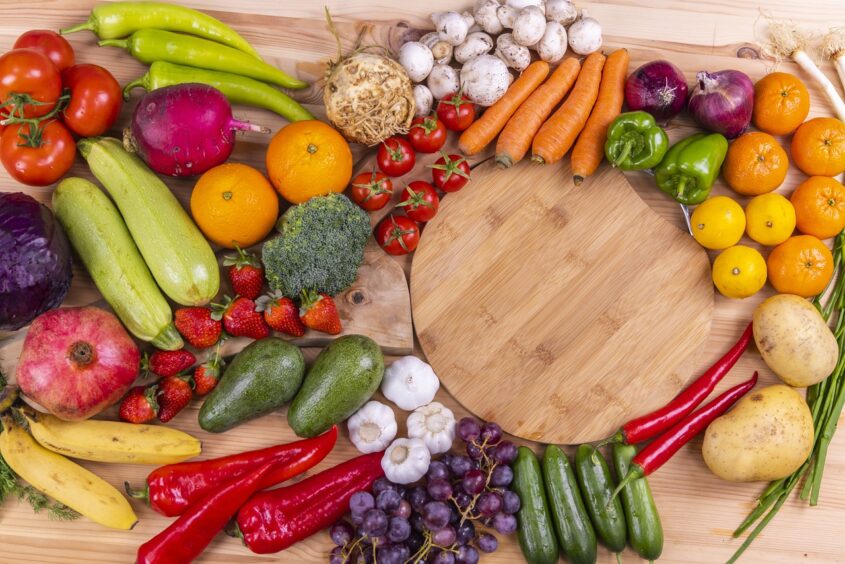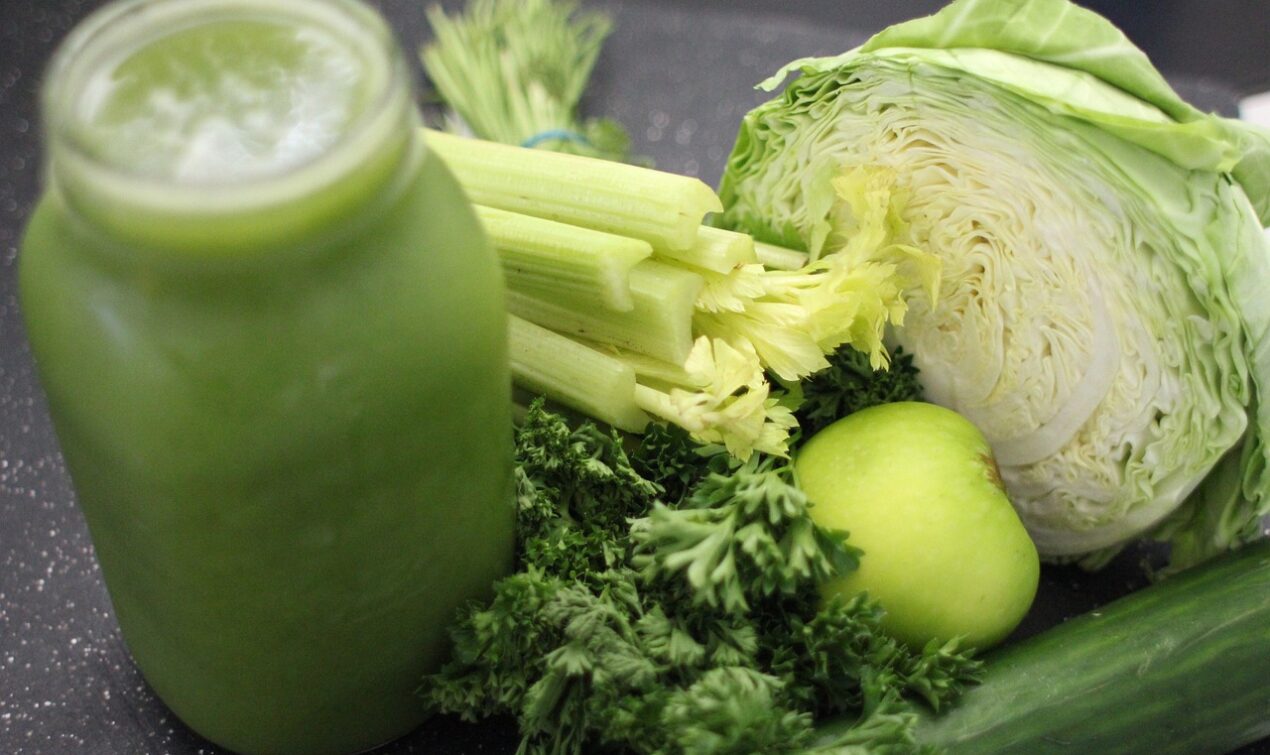Crudist lifestyle: what it is and the pros and cons of raw food

In recent years, the crudist lifestyle, also known as raw foodism, has gained popularity among health enthusiasts; raw foodists believe that consuming foods in their natural, uncooked state promotes optimal health and vitality.
While the concept may seem intriguing, it is essential to delve deeper into the pros and cons of a crudist lifestyle to understand its potential benefits and limitations.
What is the raw food diet?
The raw food diet emphasizes the consumption of uncooked and unprocessed foods; it typically includes a variety of fruits, vegetables, nuts, seeds, sprouts and certain plant-based foods that have not been heated above a certain temperature.
The diet aims to preserve the natural enzymes, nutrients, and phytonutrients present in raw foods, which proponents believe contribute to improved health and vitality. However, it’s important to note that the specifics of the raw food diet can vary among individuals and some may choose to include certain lightly cooked or heated foods as well.
Raw food diet: pros
Let’s discover together all the pros of the raw foods:
- Enriched nutritional value: raw foods retain their natural enzymes, vitamins, minerals and phytonutrients that can be diminished or destroyed by cooking; these nutrients are essential for optimal bodily function and can support overall well-being.
- Increased antioxidant intake: raw fruits, vegetables, nut, and seeds are abundant in antioxidants, which help combat oxidative stress and reduce the risk of chronic diseases, including heart disease and certain types of cancer.
- Improved digestion: raw foods are rich in fiber, which aids in digestion, promotes regular bowel movements and contributes to a healthy gut; additionally, the live enzymes present in raw foods can assist in breaking down food, making it easier for the body to digest.
- Weight management: a raw food diet often consists of whole, unprocessed foods that are naturally low in calories; as a result, it can contribute to weight loss or weight management when combined with a balanced approach and portion control.
- Enhanced hydration: many raw foods, such as fruits and vegetables, have high water content, helping to keep the body hydrated.

Raw food diet: cons
Now, let’s take a look at the negative aspects of the crudist diet:
- Potential nutrient deficiencies: while raw foods offer an array of nutrients, certain nutrients like vitamin B12, vitamin D and omega-3 fatty acids are predominantly found in animal products or fortified foods. Without careful planning or appropriate supplementation, a raw food diet may lead to deficiencies in these essential nutrients.
- Digestive challenges: raw foods can be challenging to digest for some individuals, particularly those with sensitive digestive systems or certain medical conditions; raw cruciferous vegetables, for example, may be harder to digest and can cause discomfort or bloating.
- Food safety concerns: eating raw foods increases the risk of foodborne illnesses, as bacteria and pathogens can be present in uncooked produce; proper washing and food handling techniques are crucial to minimize these risks, but they cannot eliminate them entirely.
- Limited culinary options: a raw food diet often requires careful meal planning and preparation to ensure variety and balanced nutrition; the elimination of cooking techniques may limit the range of textures and flavors available, potentially leading to monotony and decreased satisfaction with meals.
- Social challenges: following a raw food lifestyle can present social challenges, as it may be difficult to find suitable options when dining out or attending social events. It requires open communication with friends, family and restaurants to accommodate dietary needs and preferences.
Raw food VS processed food
Raw food and processed food are two distinct categories of food that differ significantly in their preparation and nutritional content.
Raw Food
Raw food refers to food that is consumed in its natural, uncooked state or minimally processed; consuming food in its raw form preserves its natural enzymes, vitamins, minerals and phytonutrients, which can be diminished or destroyed by cooking.
Processed Food
Processed food, on the other hand, refers to food items that have undergone various alterations through cooking, refining, preserving or adding artificial ingredients. These alterations are often done to enhance flavor, extend shelf life or improve convenience.
Processed foods can include items such as pre-packaged snacks, frozen meals, sugary drinks, fast food and canned goods. The processing methods used in the production of these foods can involve cooking, refining, pasteurization, addition of preservatives, colorings, flavorings and other additives.
Key Differences
- Nutritional content: raw foods tend to be rich in enzymes, vitamins, minerals and phytonutrients, as these components can be partially or entirely lost during food processing. Processed foods may contain added sugars, unhealthy fats, sodium and artificial ingredients while often being lower in essential nutrients.
- Digestibility: raw foods, particularly fruits and vegetables, are generally easier to digest due to their natural fiber content and live enzymes. Processed foods, especially those high in refined carbohydrates and unhealthy fats, can be more challenging to digest and may contribute to digestive issues.
- Health implications: raw food diets can offer health benefits such as improved digestion, increased nutrient intake, and potential weight management; conversely, a diet high in processed foods is associated with higher risks of obesity, cardiovascular diseases, type 2 diabetes and other chronic health conditions.
- Convenience and accessibility: processed foods are often more convenient and readily available compared to raw foods, which require more preparation and planning.
Difference between raw food diet and barf diet

The raw food diet and the BARF (Biologically Appropriate Raw Food) diet are both dietary approaches that involve feeding pets, particularly dogs, uncooked and unprocessed foods. However, there are some key differences between the two:
- Targeted consumer: the raw food diet primarily refers to a dietary approach for humans, promoting the consumption of raw, uncooked foods. On the other hand, the BARF diet specifically pertains to feeding raw food to domesticated animals, particularly dogs.
- Nutritional composition: the raw food diet for humans typically includes a variety of raw fruits, vegetables, nuts, seeds and other plant-based foods. In contrast, the BARF diet for dogs, emphasizes a combination of raw meat, bones, organs and occasionally fruits and vegetables; the BARF diet aims to mimic the natural diet of dogs’ ancestors, which consisted of raw prey.
- Food safety considerations: when following a raw food diet for humans, there are food safety considerations, such as proper washing and handling of produce, to minimize the risk of foodborne illnesses. However, when it comes to the BARF diet for dogs, there is a higher tolerance for raw meat consumption due to dogs’ shorter digestive tracts and more robust immune systems compared to humans.
- Cultural context: the raw food diet for humans has gained popularity among health enthusiasts seeking the potential benefits of consuming foods in their natural state. The BARF diet, however, is rooted in the belief that feeding dogs a raw diet more closely aligns with their biological needs and promotes their overall health and well-being.
Can human survive on raw food?
Yes, humans can survive on a raw food diet; many people follow a raw food diet as a lifestyle choice and maintain good health. However, it’s important to approach a raw food diet with careful planning and consideration to ensure that all essential nutrients are adequately met.
A well-balanced raw food diet should include a variety of raw fruits, vegetables, nuts, seeds, sprouts and plant-based foods. It’s important for individuals following a raw food diet to be mindful of these potential nutrient deficiencies and consider appropriate supplementation or alternative food sources.
Additionally, some individuals may find it more difficult to digest certain raw foods, especially if they have digestive sensitivities or specific medical conditions; it’s essential to listen to your body and make adjustments as needed to ensure optimal digestion and overall well-being.
Ultimately, the key to success on a raw food diet lies in careful meal planning, nutritional knowledge and ensuring a wide variety of nutrient-dense foods are included.
Consulting with a healthcare professional or a registered dietitian can be beneficial to ensure that nutritional needs are being met and to address any potential concerns or challenges associated with a raw food diet.
In conclusion…
The crudist lifestyle, centered around consuming raw foods, offers both advantages and disadvantages. While raw foods can provide an abundance of nutrients, improve digestion and promote weight management, it is essential to address the potential challenges such as nutrient deficiencies, digestion issues, food safety concerns, limited culinary options and social implications.
Raw food emphasizes the consumption of uncooked or minimally processed foods to retain their natural nutrients, while processed foods undergo various alterations and can be less nutritious; striking a balance between raw and processed foods by focusing on whole, minimally processed options is generally recommended for a healthy and balanced diet.



